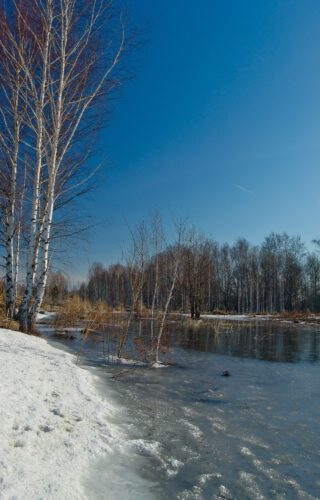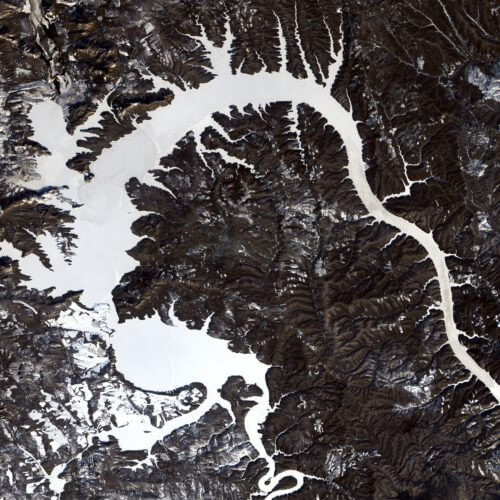The heat wave that has been plaguing Siberia in recent times should be of great concern to us, especially if we connect it to other environmental phenomena that are occurring at the same time in the region
Yael Mor, Angle - news agency for science and the environment

In August 2019, huge fires broke out in Siberia and other areas in eastern Russia and consumed large natural areas whose estimated area exceeds 26 thousand square kilometers, more than the area of Israel. The fires caused extensive damage to property and loss of human life. If that wasn't enough, later, in early June 2020, Russian President Vladimir Putin declared a state of emergency in northern Siberia due to a serious diesel leak: more than 20 thousand tons of diesel leaked into the Ambrania River, after a fuel tank collapsed at a local power plant.
The environmental blows did not stop there. On June 20, an all-time record temperature was measured in the town of Verkhoyyansk located in northern Siberia: 38 degrees Celsius. For comparison, even in Tel Aviv lower values were measured that day - only 27 degrees.
Why precisely in a place known as one of the coldest places in the world was a high temperature measured and so uncharacteristic for the region and are events such as the huge fires and the oil spill that occurred in the region earlier also related in one way or another to this situation? According to the experts, there is indeed a connection between all the events: the climate crisis.
Located in the Arctic region, Verkhyansk is among the coldest inhabited places in the Northern Hemisphere and is characterized by a long and icy winter with an average temperature of 50 degrees Celsius below zero. Summer in this area is short and hot, with an average temperature of 20 degrees. The new heat record was set during a heat wave that the region experienced during June 2020. "Prolonged heat waves in high latitudes - such as those of Scandinavia, Alaska and northern Canada - are becoming much more common in recent years," says Prof. Yoav Yair, Dean of the School of Sustainability at the Interdisciplinary Center in Herzliya. "This is one of the results of the trend of climate change and global warming, which is definitely visible to the eye, and whose intensity is only getting worse."
According to Yair, atmospheric systems cause the movement of air from low and southern latitudes towards Siberia and create periods of hot weather in which temperatures are 5-10 degrees higher than the average in the region "All this happens after a winter that was also 3-2 degrees warmer than the average, and during which temperatures were measured that had not been felt in 130 years in these areas. This winter resulted in ice melting and relatively low snow cover. In other words, this heat that we see today is a continuation of a hot and dry winter, which created an aggravation and acceleration of the problem", he says.

The heat releases the trapped methane
From a climatic point of view, two factors are at play here that influence and influence the greenhouse effect and the increase in temperatures: the first factor is the process of thawing frozen soils (permafrost). These are soils found in the Arctic regions, including Siberia, and are characterized by a depth of several frozen meters below the surface of the earth. "The Karach-Had layers hold huge amounts of frozen methane gas underground," explains Yair. "Methane is created in the decay processes of organic matter, and as long as it is frozen, it does not affect the composition of the atmosphere. The problem starts when there is a massive melting of methane ice. This worries us because we know that methane gas is a very strong greenhouse gas - 30 times stronger than carbon dioxide (over a 100-year stay in the atmosphere). It is about hundreds of square kilometers of frozen wetlands that will at once release the methane following thawing. Such a situation creates a process that will only accelerate the greenhouse effect in those areas."
Besides the accelerated release of methane gas, the melting of the layers also damages the infrastructure. "Almost all the infrastructure in the regions of Siberia is embedded in this ice: electricity poles, telephone lines, gas and oil pipelines and even buildings and roads," says Yair. "The residents of the area rely on the engineering ability of the ice to keep these infrastructures stable. As soon as the ice begins to melt and become in a kind of aggregation state similar to hail - a kind of half-liquid half-thawed soil mixture - the ground, of course, loses its stability and strength and as a result we see the collapse of infrastructure. This is also, apparently, one of the causes of the rupture in the diesel reservoir that occurred at the beginning of the month and caused a serious environmental disaster in the area: the soil that held the reservoir thawed, which caused it to move and was damaged, which resulted in the leakage of more than 20 thousand tons of diesel into the area. Experts believe that it will take years to clean up the pollution."
Another factor that affects the rise in temperatures in the region is the feedback mechanism of the ice albedo. Albedo is a value that represents the amount of solar radiation that hits a surface and is returned from it directly into space (and not absorbed by the surface). The brighter the surface, the higher its albedo value and it reflects more solar radiation into space. Dark surfaces have a lower albedo value and absorb more solar radiation, causing the surface to warm. "Here, the positive feedback mechanism comes into play," says Yair. "The increase in temperature causes a rapid thawing of the ice and the exposure of more dark surfaces - the soil under the ice. The exposed areas have a low albedo - that is, they absorb a lot of solar radiation, heat up and contribute to further melting of ice and further warming of the ground. Thus, the snow in Siberia can disappear very quickly, which will leave the region less white than usual this summer."
According to Yair, the high temperatures and dryness are the main contributors to the huge fires. "When everything dries out, it's hot and it doesn't rain, all it takes for fires to start is one lightning bolt that can cause a fire in a moment. This is what happened in 2003 - Siberia burned for almost two months non-stop, and this is what happened in August 2019 as well. I believe that this will happen in 2020 as well, I would like to hope that it will not happen with the same intensity, but given that it is already warm and relatively dry now, it is likely that it will happen."
look at the average
And what about the heat record recorded this month in Siberia? According to Yair, the extreme values that break the records are not the ones that should worry us. "Reconciliation processes take time. I suggest looking at the long-term average, at several weeks in a row where temperatures were above 15 or 20 degrees Celsius. If there is one day when an extreme temperature was measured, but on all the other days the temperature will be typical for the region - that is, relatively low temperatures - that is fine, because too much damage was not caused. But if a long sequence of warm days is maintained, the thaw will most likely accelerate and cause the two critical feedback processes to accelerate: methane emission and albedo change. Of course, as a result, we will also see the secondary damage caused to infrastructure and people."
"Looking into the future, it's not going to get better and may even get worse," concludes Yair, "we will probably see more extreme events and even a worsening of the greenhouse effect and climate change."
More of the topic in Hayadan:

One response
That they stop doing atomic experiments that change the climate in the world, that there be a complete ban.